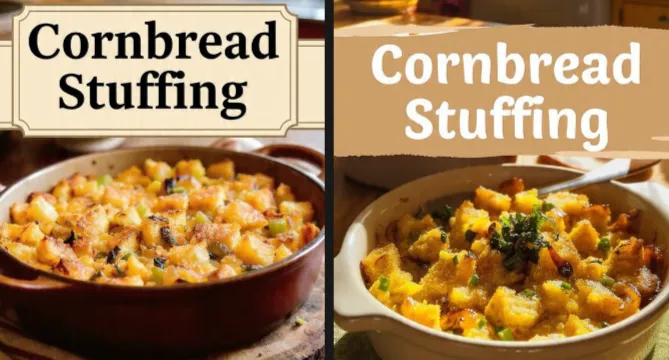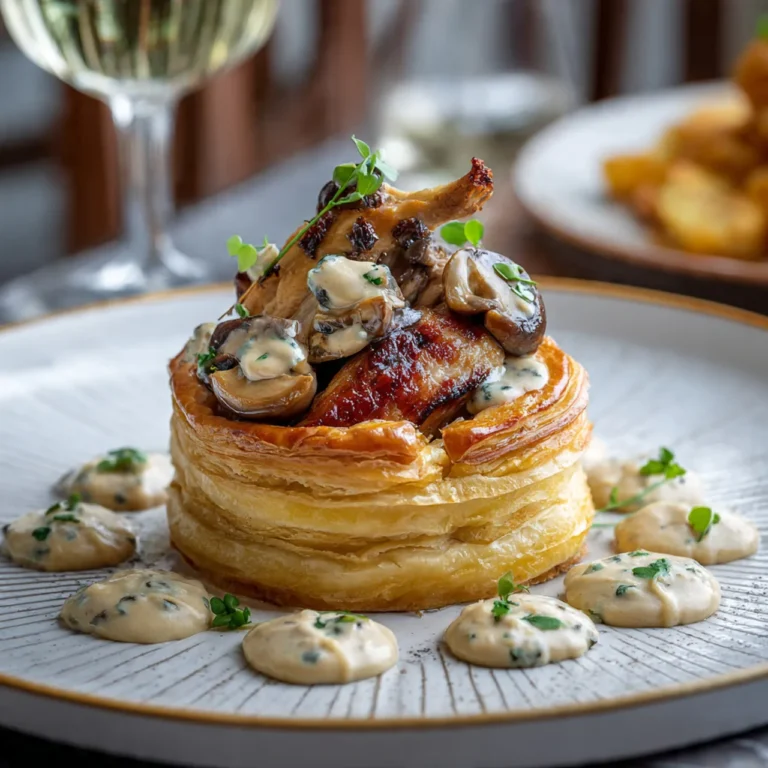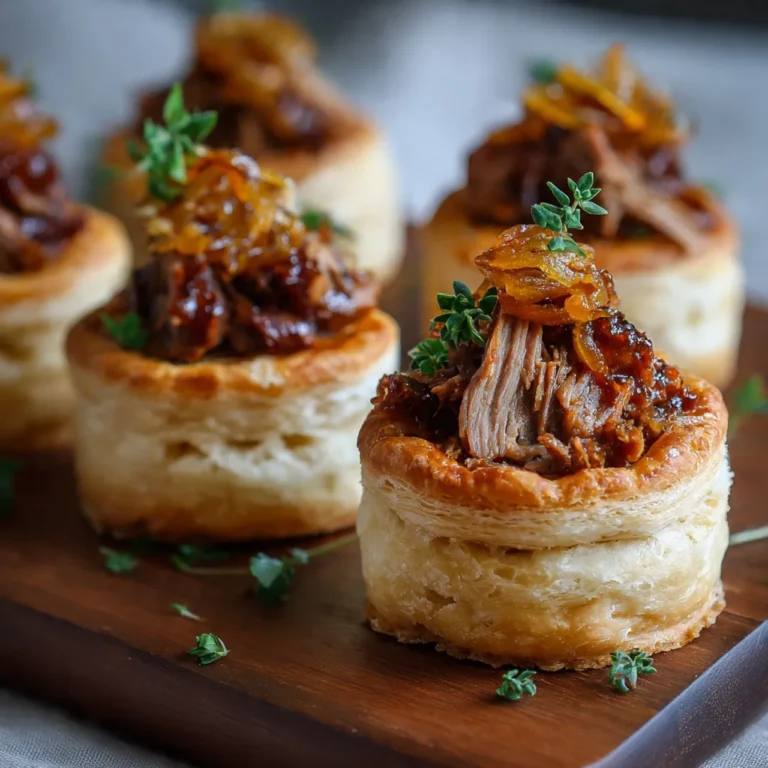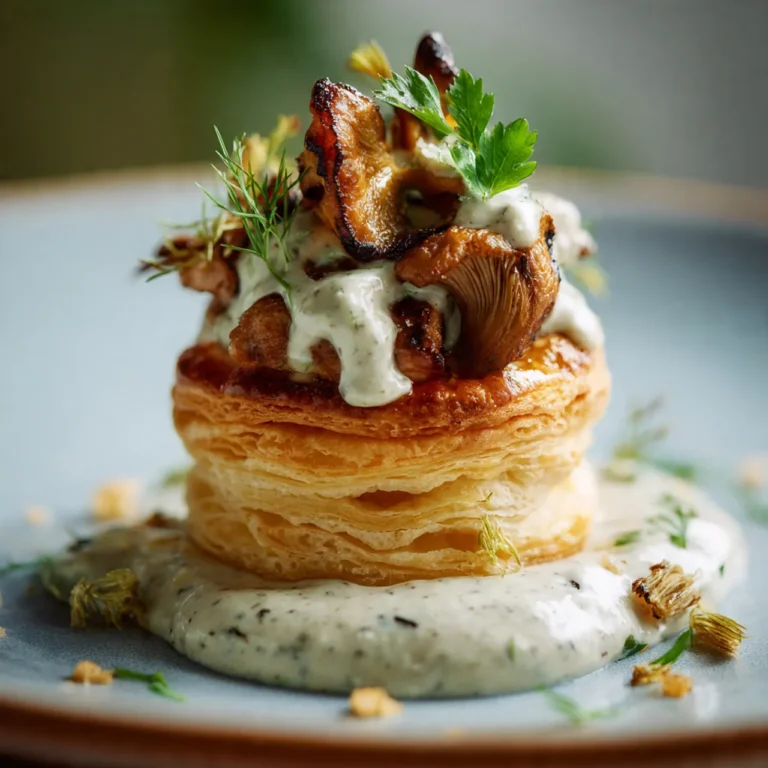Cornbread Stuffing is a beloved holiday classic that brings warmth, comfort, and rich flavor to the table. With its golden, crumbly texture and aromatic blend of herbs, vegetables, and broth, it’s the perfect companion to roast turkey, chicken, or ham. This dish combines the rustic charm of cornbread with the savory depth of traditional stuffing, creating a side that’s both hearty and satisfying.
Unlike regular bread stuffing, cornbread stuffing has a slightly sweet, buttery flavor that pairs beautifully with savory ingredients like onions, celery, and sage. Whether baked inside the bird or in a casserole dish, it’s a staple of Southern and holiday cooking that never fails to impress.
The Essence of Cornbread Stuffing
The essence of cornbread stuffing lies in its balance of textures and flavors. The cornbread provides a tender, crumbly base that absorbs the rich broth and seasonings, while the vegetables and herbs add depth and aroma. The result is a dish that’s moist but not soggy, flavorful but not overpowering — a perfect harmony of comfort and tradition.
It’s a recipe that captures the spirit of the holidays: simple ingredients, lovingly prepared, and shared with family and friends.
Why This Recipe Works
This recipe works because it combines homemade cornbread with a flavorful mix of sautéed vegetables, herbs, and broth. The cornbread is dried slightly before mixing, allowing it to absorb the liquid without becoming mushy. Baking the stuffing uncovered at the end creates a golden, crisp top while keeping the inside moist and tender.
The result is a stuffing that’s rich, aromatic, and perfectly textured — a true holiday favorite.
Ingredients and Their Roles
Cornbread: The foundation of the dish, providing texture and a hint of sweetness.
Butter: Adds richness and helps sauté the vegetables.
Onion and celery: Classic aromatics that build flavor.
Broth: Moistens the stuffing and infuses it with savory depth.
Eggs: Bind the mixture and add structure.
Herbs (sage, thyme, parsley): Add fragrance and traditional holiday flavor.
Salt and pepper: Balance and enhance the overall taste.
Step-by-Step Recipe
Ingredients
For the cornbread:
- 1 cup cornmeal
- 1 cup all-purpose flour
- 1 tablespoon baking powder
- ½ teaspoon baking soda
- 1 teaspoon salt
- 2 tablespoons sugar (optional)
- 1 cup buttermilk
- 2 large eggs
- ¼ cup melted butter
For the stuffing:
- 8 cups crumbled cornbread (from above or store-bought)
- ½ cup unsalted butter
- 1 large onion, finely chopped
- 3 celery stalks, finely chopped
- 2 teaspoons dried sage (or 1 tablespoon fresh)
- 1 teaspoon dried thyme
- ½ teaspoon black pepper
- ½ teaspoon salt
- 2½ cups chicken or vegetable broth
- 2 large eggs, beaten
- 2 tablespoons chopped fresh parsley
Preparation
- Make the cornbread. Preheat the oven to 400°F (200°C). Grease a 9-inch baking pan. In a bowl, whisk together cornmeal, flour, baking powder, baking soda, salt, and sugar. In another bowl, mix buttermilk, eggs, and melted butter. Combine wet and dry ingredients until just mixed. Pour into the pan and bake for 20–25 minutes until golden. Cool completely.
- Dry the cornbread. Crumble the cooled cornbread into large pieces and spread on a baking sheet. Let it dry overnight or bake at 250°F (120°C) for 30 minutes to remove moisture.
- Prepare the vegetables. In a large skillet, melt the butter over medium heat. Add onion and celery, cooking until soft and translucent, about 8 minutes. Stir in sage, thyme, salt, and pepper.
- Combine ingredients. In a large bowl, combine the crumbled cornbread, sautéed vegetables, and parsley. Pour in the broth gradually, stirring gently until the mixture is moist but not soggy. Add the beaten eggs and mix lightly.
- Bake the stuffing. Transfer the mixture to a greased 9×13-inch baking dish. Cover with foil and bake at 350°F (175°C) for 30 minutes. Remove the foil and bake for another 15–20 minutes until the top is golden and crisp.
- Serve. Let rest for 10 minutes before serving warm.
Tips for Perfect Cornbread Stuffing
- Use day-old or dried cornbread for the best texture.
- Don’t overmix — keep the cornbread pieces slightly chunky.
- Add broth gradually to avoid sogginess.
- Bake uncovered at the end for a crisp top.
- Adjust seasoning to taste before baking.
Variations and Flavor Combinations
1. Classic Southern Cornbread Stuffing
Traditional version with sage, thyme, and butter.
2. Sausage Cornbread Stuffing
Add cooked sausage for a hearty, savory twist.
3. Oyster Cornbread Stuffing
Add chopped oysters and their liquor for a coastal variation.
4. Apple and Pecan Cornbread Stuffing
Add diced apples and toasted pecans for sweetness and crunch.
5. Jalapeño Cornbread Stuffing
Add diced jalapeños and shredded cheese for a spicy kick.
6. Vegetarian Cornbread Stuffing
Use vegetable broth and add mushrooms for umami flavor.
Serving Suggestions
Cornbread Stuffing pairs beautifully with:
- Roast turkey or chicken.
- Glazed ham or pork tenderloin.
- Mashed potatoes and gravy.
- Cranberry sauce or roasted vegetables.
It’s perfect for:
- Thanksgiving and Christmas dinners.
- Sunday family meals.
- Potlucks and celebrations.
Make-Ahead and Storage
Make-ahead: Prepare the stuffing up to one day in advance. Cover and refrigerate. Bake just before serving.
Storage: Store leftovers in an airtight container in the refrigerator for up to 3 days.
Freezing: Freeze unbaked stuffing for up to 2 months. Thaw overnight before baking.
Reheating: Reheat in the oven at 350°F (175°C) until warm and crisp on top.
Nutritional Information (per serving)**
- Calories: 320 kcal
- Protein: 7 g
- Fat: 18 g
- Carbohydrates: 34 g
- Fiber: 3 g
The History of Cornbread Stuffing
Cornbread stuffing, also known as cornbread dressing in the South, has deep roots in American culinary history. Cornbread was a staple in Native American and early Southern diets, made from ground cornmeal and baked in cast-iron skillets. When European settlers introduced the concept of stuffing poultry, Southern cooks adapted it using cornbread instead of wheat bread. Over time, it became a cherished holiday tradition, symbolizing comfort, abundance, and regional pride.
Texture and Flavor Profile
The perfect cornbread stuffing is moist and tender inside, with a golden, slightly crisp top. The cornbread provides a subtle sweetness, while the herbs and vegetables add savory depth. The butter and broth create richness, and the eggs bind everything together. Each bite offers a balance of soft, flavorful crumbs and aromatic herbs.
Common Mistakes and How to Avoid Them
Too dry: Add more broth gradually until the mixture is moist.
Too soggy: Use dried cornbread and avoid overmixing.
Bland flavor: Taste and adjust seasoning before baking.
Uneven texture: Mix gently to keep cornbread pieces intact.
Burnt top: Cover with foil if it browns too quickly.
Chef’s Tips
- Use homemade cornbread for the best flavor.
- Add a splash of cream for extra richness.
- Mix in chopped fresh herbs for brightness.
- Bake in a cast-iron skillet for a rustic presentation.
- Serve with gravy or cranberry sauce for contrast.
Pairing Ideas
With Drinks:
- Chardonnay or Pinot Noir for a balanced pairing.
- Sparkling cider or sweet tea for a non-alcoholic option.
- Light beer for a casual meal.
With Other Dishes:
- Pair with roasted meats or poultry.
- Serve alongside mashed potatoes, gravy, and green beans.
- Add to a holiday buffet with salads and rolls.
The Joy of Holiday Cooking
Cornbread Stuffing embodies the joy of holiday cooking — the aroma of butter and herbs filling the kitchen, the warmth of the oven, and the anticipation of sharing a meal with loved ones. It’s a dish that brings comfort and nostalgia, reminding everyone of family traditions and festive gatherings.
It’s proof that simple ingredients, when combined with care, can create something truly special.
The Science of Perfect Stuffing
The key to perfect stuffing lies in moisture balance. The cornbread must be dry enough to absorb the broth without disintegrating. The eggs provide structure, while the butter and broth add richness. Baking uncovered at the end allows steam to escape, creating a crisp top and tender interior.
Presentation and Finishing Touches
For an elegant presentation, garnish the baked stuffing with fresh parsley or thyme. Serve directly from the baking dish for a rustic look, or spoon into a serving bowl for a refined touch. For extra flavor, drizzle with melted butter or turkey drippings before serving.
Modern Variations
- Keto Version: Use almond flour cornbread.
- Gluten-Free Version: Use gluten-free cornmeal and flour.
- Dairy-Free Version: Use olive oil and plant-based milk.
- Low-Sodium Version: Use unsalted butter and low-sodium broth.
- Gourmet Version: Add wild mushrooms and truffle oil.
The Perfect Holiday Side
Cornbread Stuffing is the perfect holiday side dish — savory, moist, and full of flavor. It complements rich meats, balances sweet sides, and adds a comforting, homemade touch to the table. Its golden crust and aromatic herbs make it a crowd-pleaser every time.
The Cultural Influence of Cornbread
Cornbread is a cornerstone of Southern cuisine, symbolizing resourcefulness and tradition. Its use in stuffing reflects the blending of Native American, African, and European culinary influences. Today, cornbread stuffing continues that legacy, uniting families across generations and regions through shared flavors and memories.
The Role of Herbs and Broth
Herbs like sage, thyme, and parsley bring fragrance and depth, while broth provides moisture and richness. Together, they create a stuffing that’s flavorful, aromatic, and perfectly balanced.
The Perfect Bite
The perfect bite of cornbread stuffing is moist, buttery, and infused with herbs. It’s savory with a hint of sweetness, soft inside with a crisp top — a bite that captures the essence of comfort and celebration.
Conclusion
Cornbread Stuffing is a celebration of flavor, texture, and tradition. With its moist interior, golden crust, and aromatic herbs, it’s a dish that brings warmth and nostalgia to any holiday meal.
Easy to prepare yet impressive to serve, it’s perfect for Thanksgiving, Christmas, or any family gathering. This recipe proves that with a few simple ingredients and a touch of care, you can create a dish that’s both timeless and unforgettable — a true classic of home cooking.






